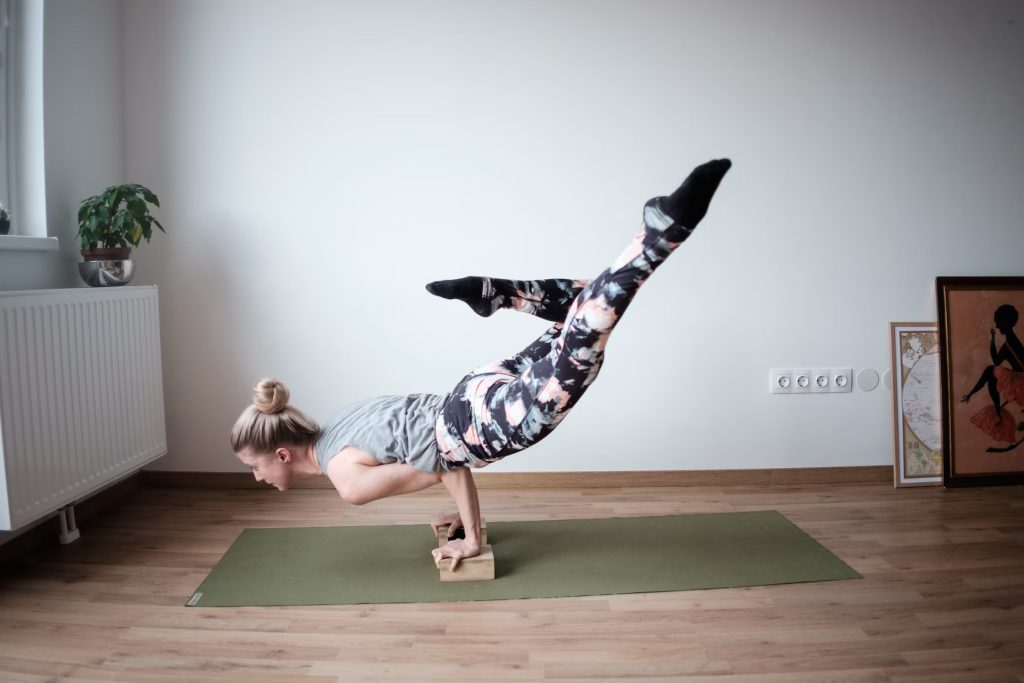
Physical Fitness and Exercise: Their Health Benefits, initiating a Routine, and Enhancing Performance
Many people make an effort to become physically fit. Indeed, one’s state of health is inextricably linked to one’s level of fitness.
A higher degree of overall physical fitness is associated with a lower risk of developing chronic illnesses and a better ability to deal with potential health problems. Along with increasing mobility and functionality, improved physical fitness benefits people of all ages.
Physical activity can improve daily performance in the short term by enhancing emotional well-being, sharpening cognitive attention, and improving sleep quality.
Simply said, our bodies are built for mobility, and they typically work best when we maintain a greater degree of physical fitness.
However, it is important to recognize that there are a variety of paths to fitness, taking into account comparisons between, for instance, a sprinter and a gymnast or a ballet dancer and a bodybuilder. It is also essential to stress that fitness is not limited to one certain “appearance.” In truth, one’s outward appearance may not always reveal information about their dietary habits, degree of physical activity, or overall fitness.

The Meaning of Fitness
Cardiorespiratory Fitness: This is measured using metrics like VO2 max and is an indication of how well the body can absorb and use oxygen, a crucial component that has a direct impact on general health and quality of life.
Muscle strength, stamina, and power are all aspects of musculoskeletal fitness.
Flexibility is the quality of having a wide range of motion in one’s joints.
The capacity to retain stability and an upright posture, which lowers the chance of falling, is referred to as balance.
Speed: This factor evaluates a person’s ability to move quickly and nimbly.
Note that a widely cited peer-reviewed research paper from 1985 established distinctions between “physical activity” (relating to bodily movement that results in energy expenditure), “exercise” (signifying planned and structured physical activity), and “physical fitness.” This paper defines physical fitness as a set of characteristics people have or develop that determine their capacity to carry out daily activities with vigor and alertness, free from undue exhaustion. According to the aforementioned paper, measures that can be used to assess a person’s fitness include flexibility, body composition, physical power, muscular stamina, and cardiovascular stamina.
According to Dr. Smith-Ryan, one’s functional abilities can be directly correlated with one’s physical fitness in a practical sense. For instance, it shows itself in a person’s ability to carry groceries or climb stairs without being out of breath, participate in active play with their children in the backyard, or successfully navigate staircases.

Fitness Types
The Physical Activity Guidelines for Americans emphasize that the key elements of fitness should be included in every comprehensive exercise program. It is significant to remember that numerous definitions of fitness include additional elements including, as previously indicated, power, speed, balance, and agility.
Aerobic (Cardiovascular) Exercise:
The cornerstone of any fitness program is aerobic exercise, often known as cardiovascular exercise or cardio, and for good reason. The American Heart Association states that this type of exercise increases heart rate and respiration, improving cardiorespiratory fitness.
According to the recommendations in the Physical Activity Guidelines, aerobic exercise includes a variety of activities like brisk walking, running, cycling, swimming, taking aerobic fitness classes (like kickboxing), tennis, dancing, yard work, and activities like jumping rope.

Training in Strength
Strength training is essential for improving mobility and overall functionality, especially as people get older. The importance of strength training in reversing the loss of muscle mass that comes with aging is stressed by Dr. Robert Sallis, a family medicine specialist at Kaiser Permanente in Fontana, California, and the chairman of the Exercise Is Medicine initiative in partnership with the American College of Sports Medicine (ACSM). He underlines further that these workouts help build bones and muscles in addition to protecting against fractures and falls, which are more common as people get older.
The American College of Sports Medicine (ACSM) defines strength or resistance training as workouts created particularly to improve muscular fitness by exposing a single muscle or group of muscles to external resistance. Weightlifting, the use of resistance bands, body weight exercises, tasks requiring heavy lifting, and physically taxing gardening are all activities that fall under this definition, according to the Physical Activity Guidelines established by the U.S. Department of Health and Human Services (HHS).

Mobility and Flexibility
The International Sports Sciences Association emphasizes that flexibility and mobility are essential components of good activity. However, as they are two different notions, to discern between the two is crucial.
Mobility refers to the body’s ability to support the whole range of motion within a joint, whereas flexibility refers to the ability of tendons, muscles, and ligaments to extend and elongate.
The duration of exercises meant to increase flexibility or mobility, such as stretching, is not specifically specified in the U.S. Department of Health and Human Services’ (HHS) physical activity guidelines. Due to a dearth of thorough study in this field, the health advantages of these activities are also still questionable. The recommendations do emphasize the value of including flexibility exercises in one’s physical fitness regimen, though.
The recommendations encourage older persons to incorporate balance training into their weekly workout routine. According to strong data, regular exercise that includes balance training can dramatically lower the risk of falls in older persons, reducing the possibility of serious and incapacitating injuries and associated effects.

Rest and restoration
It’s crucial to include set rest and recovery days in your fitness routine so that your body can go through the healing processes required to repair the natural damage muscles experience during training. Exercise naturally puts the muscles and the body as a whole under stress. The growth of strength and enhanced physical fitness depend on the rehabilitation and healing of this stress. For this recuperation to take place, the body must receive a proper amount of rest after exercise.
Recovery days may involve an active recovery day, which is defined by engaging in low-intensity, low-impact kinds of exercise like walking or mild yoga, or they may involve total abstinence from physical activity. Dr. Sallis normally encourages daily participation in some type of physical activity, even if it only entails a quick 10-minute stroll outside.
The idea of rest and recuperation days does not mean lying completely motionless on the sofa; rather, it means not straining the body so far that physical activity becomes taxing or difficult.

The Sleep Benefits of Exercise
Regular physical activity may improve your sleep in some ways. A thorough systematic evaluation of 34 different research found that 29 of them had evidence of an improvement in sleep quality related to exercise and longer stretches of unbroken sleep. Several causes have contributed to this improvement, including:
Exercise has the power to create a more harmonic alignment with the body’s natural clock, enhancing alertness throughout the day and encouraging restfulness during the appropriate overnight hours.
Neurochemical Changes: Exercise can cause the brain’s biochemistry to change in ways that make it easier to fall asleep and stay asleep.
Pre-sleep anxiety, a typical barrier to getting to sleep, may be reduced by exercise, according to earlier study.
However, it is important to remember that high-intensity exercise done right before bed, usually within an hour or two, may have the opposite impact and make it harder for certain people to fall asleep. As a result, it is advisable to arrange these intense activities earlier in the day.

Long-Term Health Benefits of Exercise
There is ample data to support the significant benefits of exercise for long-term health. Numerous benefits of regular exercise have been shown, including:
Enhancement of Cognitive Function: Regular exercise promotes better brain health.
Skeletal Health: It is essential for maintaining bone density and protecting against aging-related fragility.
Exercise regularly to preserve muscular mass, which helps one stay physically resilient as they age.
Improved Quality of Life: Exercise can increase sex life, support digestive health, and lower the risk of a number of diseases, including cancer and stroke.
In addition, significant study involving more than 116,000 adults has shown that following the guidelines for 150 to 300 minutes of physical activity each week has been linked to a 19% reduction in the risk of mortality from all causes.
The Function of Fitness in the Management of Chronic Disease
The ability to manage chronic health issues is greatly aided by physical activity. According to the Centers for Disease Control and Prevention (CDC), that physical activity has significant health benefits for people with conditions like osteoarthritis, hypertension, type 2 diabetes, multiple sclerosis, Parkinson’s disease, dementia, a history of stroke, or a cancer diagnosis. Exercise offers several benefits.
Advantages, including:
Reduction of Pain: It can lessen pain brought on by a number of chronic diseases.
Improved Metabolic Health: Exercise improves blood sugar control and insulin sensitivity is advantageous for those with type 2 diabetes.
Physical mobility is encouraged, especially in situations like Parkinson’s disease.
Cardiovascular Health: Exercise improves cardiovascular health and lowers the risk of developing other chronic conditions.
Physical exercise is really important for sustaining excellent mental health, according to research.
Starting a walking habit is frequently a safe place to start for people who are dealing with a chronic disease and are thinking about increasing their physical activity. According to Dr. Sallis, the majority of people do not need special medical authorization to start a walking routine unless their doctor has specifically advised against exercise.
He promotes a viewpoint in which physical activity is seen as a fundamental component, and where people essentially need a doctor’s excuse not to exercise. However, it is advised that people call their doctor if they experience symptoms like extreme dyspnea, chest pain, or any other unsettling symptoms.
Guidelines for Recommended Exercise
The minimum amount of physical activity needed to support good health, as per the Physical Activity Guidelines for Americans published by the U.S. Department of Health and Human Services, consists of either
75 minutes of intense aerobic activity per week, like jogging or running, or 150 minutes of moderate aerobic exercise per week, such as brisk walking.
Combining both moderate and strenuous activities is also acceptable as long as they are spaced out over at least two days of the week.
The guidelines include performing muscle-strengthening exercises, concentrating on the main muscular groups in the shoulders, chest, back, belly, and legs and arms, at least twice a week in addition to cardiovascular activity.
Notably, there are currently no particular suggestions in the guidelines for mobility or flexibility exercises. However, it is recommended that older persons, in particular, include balance training in their weekly physical exercise routine.
It is important to recognize that participating in more physical activity is linked to better health outcomes, particularly up to 300 minutes per week of moderate-intensity exercise, after which the advantages tend to level out. It is crucial to understand that while these fundamental fitness guidelines are enough to promote long-term health, they could not satisfy the needs of certain health or fitness goals. For instance, a much longer amount of exercise is required each week if you want to prepare for a marathon.
Additionally, it is crucial to remember that excessive exercise may cause the body to experience more stress and potentially harm health. Although research suggests it greatly surpasses the current weekly minimum requirements by several folds, the exact maximum limit is yet unknown.
Nutrition Guidelines for Exercise
In order to support physical activity, proper diet is essential. The following diet recommendations are broken down by exercise phase:
Before you start working out:
Pay close attention to your body’s indications of hunger, especially if you are working out soon after getting up.
You might not need pre-workout meal, depending on your dinner the prior night and how hungry you are.
If you’re hungry and planning a vigorous workout, think about having a small, easily digestible snack.
Get energy for your workout by eating easily digestible carbs, like a banana or cereal, just before you exercise, or by combining carbohydrates and protein (like toast with nut butter) 30 minutes prior.
You may decide to completely forgo the pre-workout snack if you’ve just eaten.
When You’re Working Out:
Longer bouts of endurance activity require mid-exercise fuelling, but shorter exercises typically do not.
According to the International Society of Sports Nutrition’s recommendations, it is advised to eat 30 to 60 grams of carbs per hour after the first 60 minutes of exercise.
Sports drinks are a good choice for sustaining energy levels throughout prolonged exercise.
Following a Workout:
It may not be necessary to replenish right away after low- to moderate-intensity workouts, such a 45-minute brisk stroll, especially if your next meal is close by.
On the other hand, intense workouts or the thought of another exertion later that day or the next day necessitate nutritional refueling.
According to Jackie Dikos, RDN, a suggested strategy entails ingesting 10 to 20 grams of protein and 0.5 grams of carbohydrates per pound of body weight.


This is very useful… Recommend to those who needs authentic information…
Helps me alot… thanks for such useful informations.
Keep it up bro